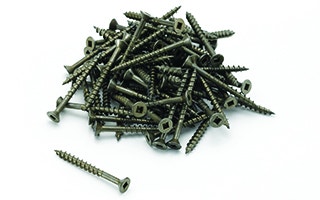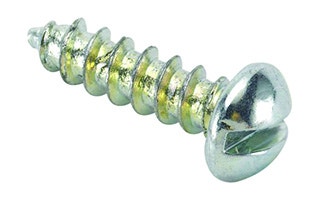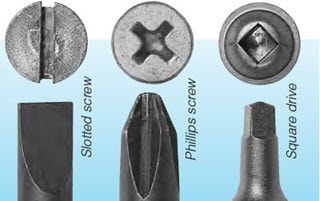Learn The Different Types of Screw Head Styles
Ever grabbed a screwdriver in a rush and realized you picked the wrong one? If you've ever wondered why there are so many types of screw heads your not alone. One of our Woodworker's Journal readers asks this two part question
Woodworking Question - Why are there so many different screw head styles — i.e., Phillips head, slotted, star-shaped, hexagonal, etc.? And, how many screws are in a one-pound and five-pound box?

Answer: The primary reason for the wide variety of screw head drive types is to ensure the fact that you will never have the proper screwdriver close at hand when you need it. Now, with my spleen properly vented (punctured no doubt by a cheese-headed Torx drive …), I will attempt a more reasoned response.
Each different style of drive head (Phillips, spanner head, Tor x, tri-wing, etc.) was created to more effectively transfer energy (torque) from a drive mechanism (a flat-blade screwdriver, battery-powered drill/driver, Yankee screwdriver, etc.) to the screw — rotating it so that the threaded, cone-shaped shaft will twist into or out of a hole. All of the centered and symmetrical drive heads — Phillips being the prime example — were developed to work better with a mechanized drive system.

If you’ve ever tried to use a slotted screw with a powered drill/driver, you know why other styles were created. The slotted screwdriver bit slides out of the slot too easily when driven by mechanical power. When it comes to woodworking, just about any sort of drive head will do, depending on the circumstances, but if you are driving screws with a drill/driver, use one of the drive styles suited to powerdriving. My favorite is the Robertson, or square drive.
Despite being so ubiquitous and simple in concept, screws are in fact elegantly complex and sophisticated fasteners. With a wide variety of head shapes, thread and point styles, differing metal fabrication and coatings, there are entire books written about screws and with good reason — there is a lot to know about them.
The second part of your question is easier to answer. How many screws are there to the pound? It just depends. (Your local hardware store employee can give you the specifics.)
Keep the inspiration coming!
Subscribe to our newsletter for more woodworking tips and tricks
